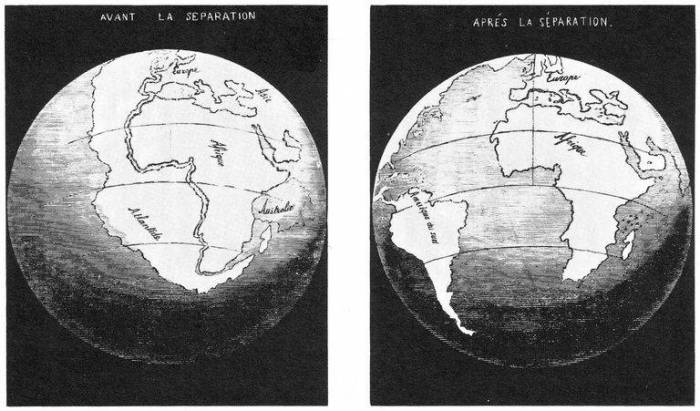Five centuries ago, when Europeans saw their first world maps that included the Americas, they noticed something odd: The coastlines of Africa and South America would fit together like a Jigsaw puzzle if they weren’t separated by the expanse of the Atlantic Ocean.
Thinkers of the era couldn’t get over this resemblance. In 1620, the English natural philosopher Francis Bacon wrote that the matching coasts were “more than a curiosity," but couldn’t figure any explanation. The interest in this curiosity would lead to one of geology’s most dubious ideas: the Expanding Earth theory.
The theory claimed that millions of years ago, our planet was only about 60 percent of its current size and that the entire surface of this pint-sized globe was blanketed by land. There were no oceans. Then, as the dwarf Earth expanded, the continental shell broke apart. The seas formed in the gaps between the continents.
Today, following a 20th century golden age of marine science, scientists understand how shifting plates have shifted the continents over the course of Earth’s history. But up until the point plate tectonics became widely accepted, the Expanding Earth theory was a popular explanation for the processes that shaped the Earth. Even respected scientists like Charles Darwin and Nikola Tesla flirted with the idea.
The Hand of God
The first scholarly attempts to explain the puzzle-piece configuration of the continents invoked the hand of God. In 1668, a French monk by the name of François Placet suggested that America and Africa separated when the lost island of Atlantis was destroyed by the biblical flood and sank into the depths, creating the Atlantic Ocean. In the 17th and 18th centuries, many Europeans thought the planet was shaped by a series of biblical catastrophes, and the wrath of God remained a trendy explanation for the position of the continents.
Before the 20th century, only two prominent scientists in the West even entertained the idea of mobile continents, and both credited a catastrophic event. The first was Abraham Ortelius, the Flemish cartographer credited with inventing the modern Atlas. In 1596, Ortelius suggested the continents may have traveled to their current positions when the Americas were "torn away from Europe and Africa.” The in 1858, the French geographer Antonio Snider-Pellegrini also suggested the continents moved apart laterally, again pointing to the biblical flood as the main instigator.
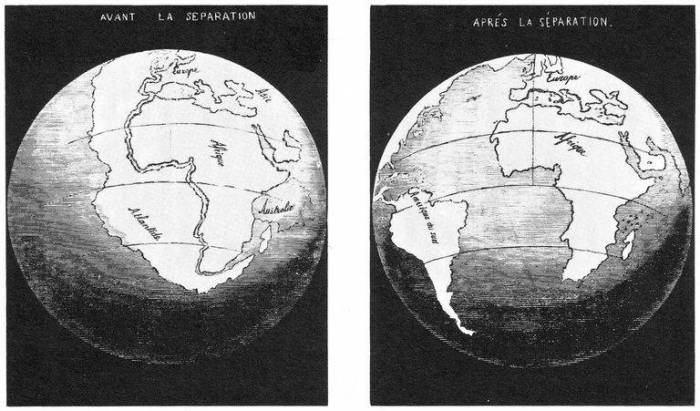
The first scientific theory suggesting that continents could drift on their own finally came in 1912, from the German geophysicist Alfred Wegener. He proposed the Earth’s disparate lands once fit together as a single ancient supercontinent he called Pangea, a Greek word meaning “all lands.” He believed Pangea was surrounded by a single body of water—the Panthalassa—and the continents maneuvered to their current positions by floating through the sea like icebergs. As evidence, he found fossils of identical plants and animals on continents now separated by oceans.
Wegener’s theory of continental drift represented a new way of thinking about our world, and today we know he was basically on the right track. But like many novel scientific ideas, his theory was met with ridicule. (It didn’t help that Wegener was a meteorologist and not a geologist, allowing others to dismiss him through snobbery.) At the time, scientists were more inclined to believe the Earth’s crust was moving up and down than side to side. In fact, through much of the 1800s, the prevailing idea was that the Earth was shrinking slightly as the molten center cooled. Geologists thought the contraction caused wrinkles to form on the surface, like a grape drying into a raisin. These wrinkles were mountains.
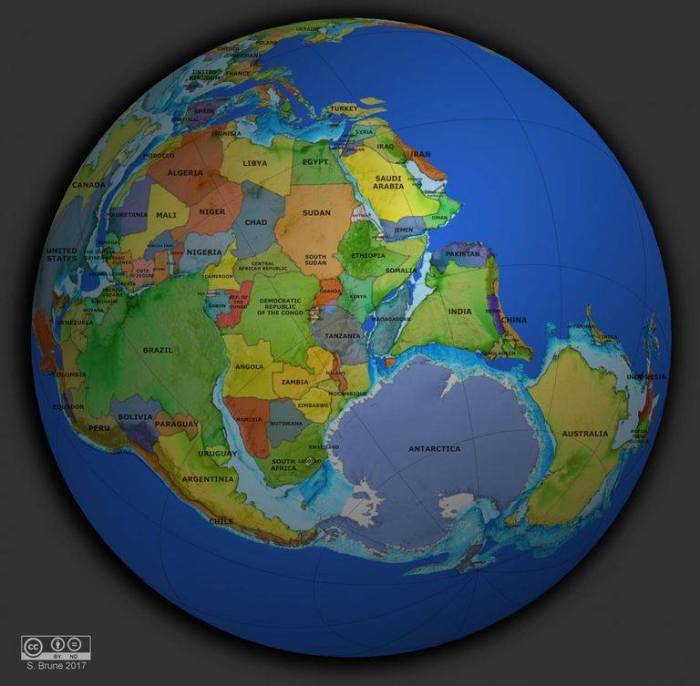
They were wrong, of course, but Wegener’s ideas would never be vindicated in his lifetime. It would take another four decades, a world at war, and a windfall of scientific discoveries for his theory to be plucked out of obscurity and given a new name: plate tectonics.
In the meantime, though, his questioning of the dogma of static continents started to catch on. And his unorthodox thinking raised some big questions—for starters, what force could cause continents to glide through the ocean? These factors would provoke a flurry of new theories that Pangea broke apart because the Earth was getting bigger.
The Shrunken Globe
The first arguments for the Expanding Earth theory arose from the simple exercise of sliding cut-out continents around model globes. Scientists were irked to discover it was impossible to piece Pangea back together on a full-size Earth without getting inexplicable yawning gaps and overlaps along the edges of the continents. But, if you modeled the continents on a sphere about 60 percent smaller than the Earth, they fit together seamlessly.
Earth expansion advocates fixated on this observation. One early proponent, German geophysicist Ott Christoph Hilgenberg, illustrated the phenomenon in the 1930s by arranging papier-mâché continents on wooden model globes of varying size. Such models became more elaborate over the decades; wooden globes gave way to clear plastic spheres, then computer simulations.
Samuel Warren Carey, a prominent Australian geologist, supported Wegener’s ideas even when they were widely scorned, and used logarithms to test hundreds of ways to reconstruct Pangea. Like others before him, he noticed that the most coherent fit was found on a shrunken globe. Thinking he’d found the missing force behind the continental drift theory, Carey became the most energetic advocate of the Expanding Earth throughout the 20th century, publishing a half dozen scientific books and papers on the subject.
“The Earth Is Expanding and We Don’t Know Why”
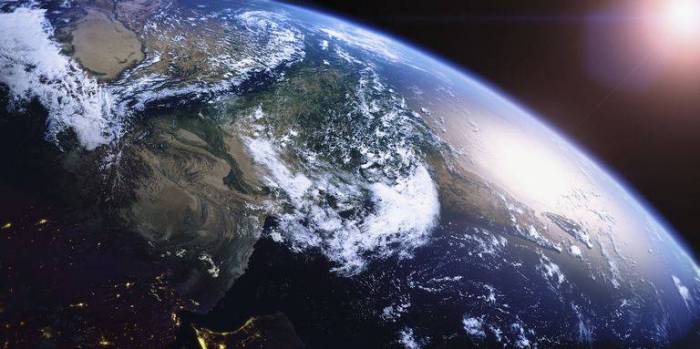
The idea that Earth has inflated over time neatly solves the continental jigsaw puzzle, but it raised a host of other problems. Most glaringly: No one ever managed to give a realistic explanation for just how in the hell it would happen.
During the theory’s heyday, proponents posited multiple possible mechanisms for the expanding Earth. One proposed a pulsating Earth that expanded and contracted in cycles, forming oceans and mountains as it waxed and waned. Another claimed the accumulation of cosmic debris caused the planet’s mass to increase. And another credited some sort of chemical phase change occurring in the Earth’s core, the way water expands when it turns into ice. But the scientific implications of a ballooning planet are outrageous to consider, and hard just to reconcile with the basic laws of physics.
Newton’s Law of Universal Gravitation tells us that a planet’s gravitational force is proportional to its mass. If the Earth doubled in size but its density remained constant, the mass would increase by eight times, and the surface gravity would be twice as strong. On the other hand, if the ancient Earth was only half the size, the force of gravity would be so weak it’s unlikely our planet could have held the Moon in orbit or formed the goldilocks conditions needed to support life. Some Expanding Earth theorists went so far as to reconsider Newton’s Universal Gravitational Constant entirely, suggesting it was not constant at all but rather decreasing over time as the Earth and all the planets in the solar system increased in size.
Many expansionists didn’t bother to explain the growth at all, content to leave that problem for physicists to figure out. Even as recently as 1984, one prominent advocate published a popular article in New Scientist titled, “The Earth Is Expanding and We Don’t Know Why.” Carey, the most prolific expansion proponent, freely admitted that the growing Earth could not be explained within the confines of known physics. He supposed that someday a new scientific discovery about the universe would come along and unlock the mystery.
A Wartime Revelation
Such an obvious weakness seems like it’d be a death sentence for a theory. But many scientists still found the expanding Earth hypothesis more plausible than the theory of continental drift, which remained radical until the end of World War II. What’s more, it seemed like the Expanding Earth, in addition to solving the continents question, could explain away another geological mystery: the strange fact that the ocean floor is billions of years younger than the Earth’s land.
Chunks of continental crust have been found that date back at least 3.8 billion years. On the other hand, the bedrock under the sea is only around 200 million years old at most, and in some places even younger. Considering the globe is about 70 percent water, this means about two-thirds of the planet’s crust simply did not exist on the ancient Earth.
Expansionism offered a convenient solution: New ocean floor was created as the Earth’s radius grew. The plate tectonics framework provided a different—if no less bewildering—explanation: that more than a hemisphere’s worth of water has been consumed into the planet’s molten interior and quite literally disappeared off the face of the Earth.
The solution emerged from World War II. During the war, the U.S. Navy developed new technology like sonar and echo sounding to hunt for German submarines. In peacetime, the Navy found itself left with some very impressive maps of seabed topography. It continued to fund marine research, leading to the first detailed map of the ocean floor, published in the late 1950s by American geologists Marie Tharp and Bruce Heezen.
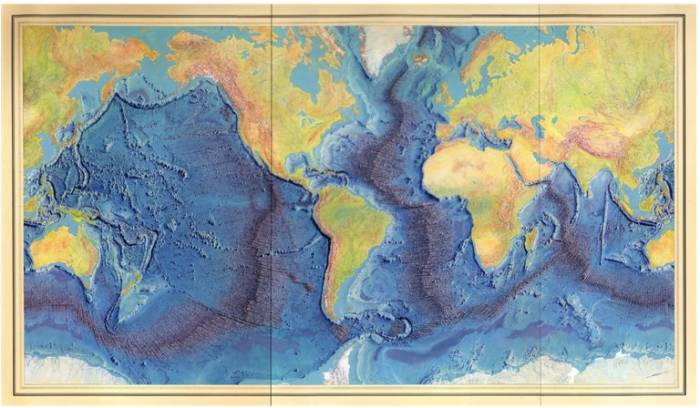
The extraordinary map was hand-drawn by Tharp with data collected by Hezeen. (As a woman, Tharp was not allowed on a research ship at the time.) It showed a massive chain of underwater mountains running north-to-south like a giant seam down the middle of the ocean, dubbed the mid-Atlantic ridge. Tharp discovered that the mountains had a huge rift running through center of the chain, with high peaks on each side. She correctly saw this as evidence that the seafloor crust was moving, supporting Wegener’s sidelined theory of continental drift. Her colleague, Hezeen, favored the Expanding Earth explanation instead, and regrettably dismissed her theory as "girl talk.”
With some convincing from Tharp, helped along by new earthquake data, Hezeen eventually changed his mind. He published a paper about their discovery, which marked a paradigm shift that led to the acceptance of plate tectonics.
The Spreading Seafloor
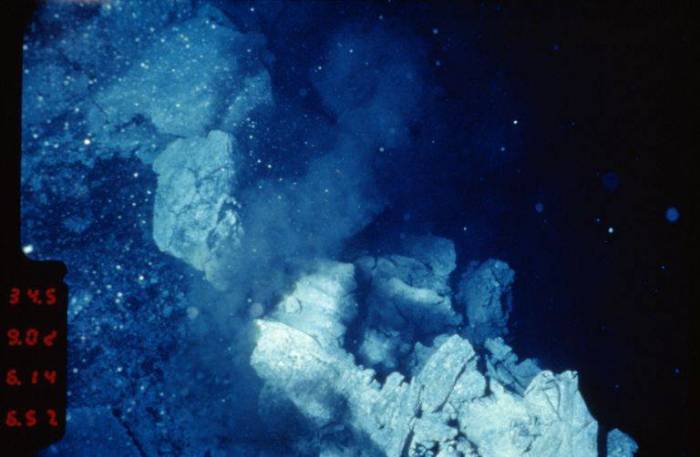
The 1960s saw a series of breakthrough geological discoveries that snowballed into mounting evidence against the growing Earth theory. The most crucial was the discovery of seafloor spreading, which explained how the entire ocean floor is recycled every 200 million years or so.
Geologists discovered that new seafloor is formed where the tectonic plates at the mid-ocean ridges spread apart from each other—hence the rift valley Tharp spotted at the mid-Atlantic ridge. The force of the separation at these rip zones causes the crust to fracture, and molten magma bubbles up to fill the cracks. As it’s cooled by the cold seawater it solidifies on the ocean floor into basalt, forming a whole new part of the Earth’s crust.
The new seabed then pushes away the existing, denser rock at the ridge equally in both directions. The oceanic plates drift further and further away from each other across the Earth’s surface, until eventually they are swallowed up by a deep ocean trench or hit the coast. As the plates collide, one slides under another, melting into the hot interior of the globe. It’s believed a body of water the size of the Pacific Ocean has been subducted under the Americas alone since the Jurassic era, explaining the young age of the ocean floor.
Even after the seafloor spreading discovery, some Expanding Earth scientists stuck to their guns. Carey—though right about continental drift all along—could not get behind the idea of disappearing oceans, and was fond of exclaiming that "Subduction is a myth!" He and a handful of other advocates continued to carry the Earth Expansion torch into the 1970s and ‘80s, well after plate tectonics was almost universally accepted by scientists as the explanation for the physical history of the Earth.
The Expanding Earth Lives On
The Expanding Earth theory lingers today in the conspiratorial fringes of the internet. But decades of satellite observation of the planet has turned up no credible evidence that the globe is getting larger—and there is considerable evidence that it is not.
Scientists now have a cadre of high-precision tools used to measure the position of the continents and the size of the Earth: satellite laser ranging, very-long baseline interferometry, GPS, Doppler satellite measurement. The measurements have been calculated and revised regularly since the late 1980s, providing the most definitive proof yet that the planet is staying roughly the same size.
A tiny amount of growth is to be expected because space debris is constantly falling toward the Earth—NASA predicts about 100 tons of meteoroids every day. But it's mostly burned up by the atmosphere, landing as dust on the planet’s surface. The debris adds a tiny amount of mass, but not nearly enough to support the growing Earth theory.
In 2011, a NASA study concluded that the Earth is not expanding by any statistically significant amount. It found the average change in Earth's radius to be just 0.1 millimeters per year, or about the thickness of a human hair. Let’s just say it’s not enough to move the continents.
More about: #Earth








